Thomas Alva Edison was one of the greatest men of the 20th century, giving the world many of its most useful inventions, including the electric light bulb, the phonograph, and motion picture cameras. In total, Edison held patents for more than 1,000 different inventions.
Samuel Edison, Thomas’ father, was Canadian-born, but left the country due to clashes with the British authorities. He settled in Milan, Ohio, where he owned and operated a lumber mill. Thomas was Samuel and Nancy’s seventh child, born on 11 February 1847, but as three of their children died in childhood, Thomas grew up with only one brother and two sisters. As a child, Edison displayed the innate curiosity that was to serve him so well in life, and he constantly wanted to know about the world around him. His parents often told the tale of how at three years old he climbed a ladder to see what was inside a grain silo. At the top, he leaned over to peer inside and promptly fell into the grain. Luckily, his father had witnessed the entire episode and was able to rescue his inquisitive young son before the grain smothered him. At age six, Edison was given a public whipping by his father for burning down the family’s barn. He had started the fire simply to see what would happen, much to his father’s fury.
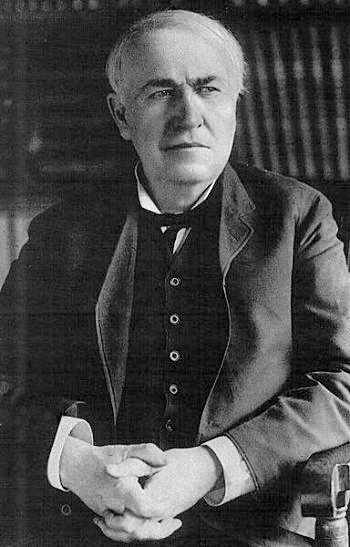
Edison’s Unusual Education
In 1854, Samuel Edison moved his wife and young family to Port Huron in Michigan and Thomas, at age eight, was introduced to the formal schooling system. Formal school and Thomas did not get along, and the teacher was irritated with his constant questions, labelling him a disruptive influence.
One day, Thomas became desperately upset and fled home, telling his mother about his teacher’s cruelty. She promptly removed him from school and taught him herself, using classical authors such as Shakespeare and Dickens and giving him all the science books she could lay her hands on. Thomas’ father also played a part by offering him a penny for every book he read. This unusual education proved to be the making of young Thomas, and he soaked up all this knowledge like a sponge soaks up water.
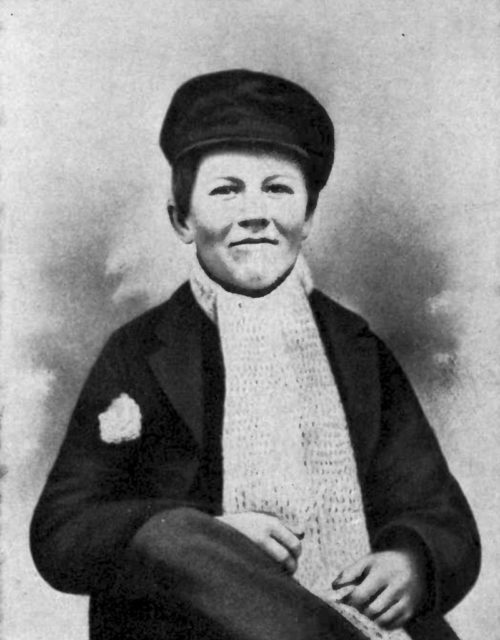
A Budding Scientist
Edison also used the cellar of the family home as his science laboratory, and he saved all the pennies he earned from his father to buy apparatus and chemicals.
His mother kept faith with him, despite several small explosions and various chemical spills.

Thomas and a friend experimented with telegraph systems and managed to set up a basic system based loosely on the one developed by Samuel Morse. He and his friend stuck to their task, and despite several setbacks, they did eventually send messages along their wire.
In 1852, the railroad finally reached Port Huron, and Thomas saw an opportunity to earn some money. At age twelve, he was employed by the Grand Trunk Railroad as a train boy on the route from Port Huron to Detroit. Thomas’ job on the railroad was to sell newspapers to the passengers.
This job left him plenty of free time, and he persuaded the conductor to let him have a little space in the baggage car to work on his experiments. Unfortunately, he dropped a jar of phosphorous, and the highly flammable material caught fire and seriously damaged the baggage car, putting an end to his experiments!
With the outbreak of the Civil War in 1861, Edison’s newspaper sales boomed due to everyone trying to keep up with news of the war. Seeing a business opportunity, Edison consistently raised his prices.
He then bought produce in Detroit and sold it back to the passengers on the return trip to Port Huron. This allowed him to open a small shop in Port Huron, selling newspapers and produce, which staffed by boys employed by him.
By the age of fifteen, Edison had opened his own newspaper, known as the Grand Trunk Herald.
Edison, the ‘Plug’.
During a wait at the station for cars to be changed on the train, Edison noticed a child playing on the railway tracks, heedless to a freight train bearing down on him. Edison leaped onto the tracks and rescued the child from certain death, to the eternal gratitude of the child’s father, James Mackenzie, the station’s telegraph operator.
In return for saving the child’s life, Mackenzie offered to teach Edison all about the telegraph system, an opportunity that Edison seized with both hands. Five months later, Edison qualified as a ‘plug,’ or a second class Telegraph Officer.
Edison used his new-found skill to become a traveling telegraph man, and he worked all over the central and northern US, filling in for telegraph operators that had gone to fight in the war. He thoroughly enjoyed his job, and his telegraph skills improved substantially, but Edison realized that his hearing was failing, most probably due to scarlet fever contracted as a child. He knew that his days as a telegraph operator were numbered.
Edison’s last job as a telegraph operator was in the Boston office of Western Union, where his speed and accuracy were appreciated by both co-workers and management.
Inventions, inventions and more inventions
Edison’s innate curiosity once again came to the fore, and he was fascinated by a book written by Michael Faraday on electricity and experiments done with electricity.
Fired up by this book, Edison created his first invention, a machine that automatically recorded votes. His machine performed beyond expectation, but he could not find a buyer for it as it meant that politicians would no longer be able to bicker about the vote count. This setback taught him a basic lesson; never to create something that there was no market for.
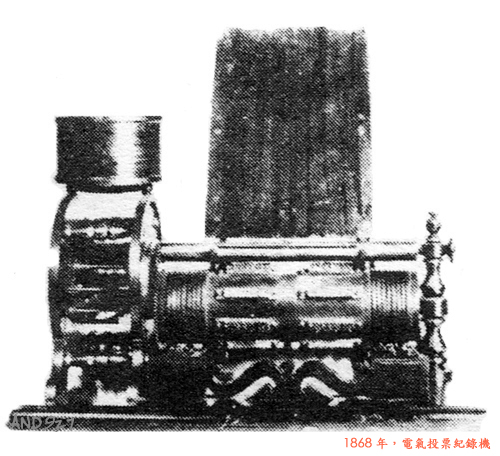
Edison then set about investigating the stock-ticker. This was a machine, based on telegraph technology, which businessmen used to keep themselves informed about stock market prices. Edison and a friend set up a small stock-ticker business that reported on the gold market. However, the business soon failed, and Edison then set about improving the stock-ticker.
Edison had become bored with working for Western Union and decided to move to New York and take up inventing full time. He carried on working on the improvements to his stock-ticker and eventually sold the new, improved version to the Western Union for the incredible sum of $40,000, a veritable fortune at the time.
This money gave him the working capital to open his own business, and in 1870 he opened the American Telegraph Works based in Newark, New Jersey. Edison employed some 50 people and ran a shop where everyone’s suggestions were welcomed and discussed.
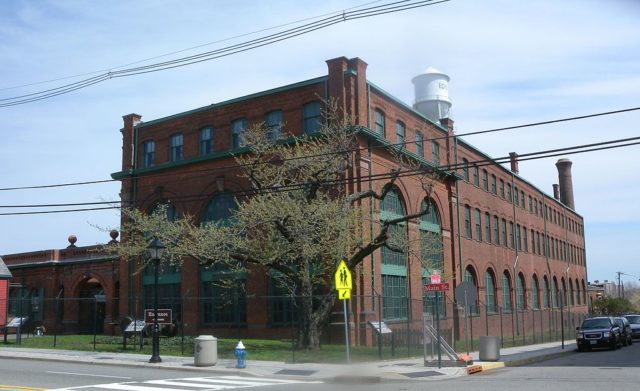
Settling Down.
One of the workers that he employed caught Edison’s eye. Mary Stilwell, age 16, was a pretty girl and Edison was very attracted to her. He had not had much interaction with women and with his deafness he bumbled his first few interactions with her, but eventually, he made his intentions clear and the pair were married on Christmas Day in 1871.
The Edisons were blessed with two sons, Thomas Alva Jr and William, and a daughter, Marion. Mary and the children became aware that being married to an inventor meant many evenings spent alone as he stayed late in his laboratory, but his work output was prodigious and he had soon applied for 60 patents.
The most notable invention was a quadruplex telegraph that could send two messages in both directions instead of only one in both directions. He also invented an electric pen that could make copies of documents.
In 1876, Edison had a two-story laboratory built in New Jersey, with a house for the family right next door. Living close to the laboratory did not mean that the family saw any more of him and he often spent nights locked in his lab.
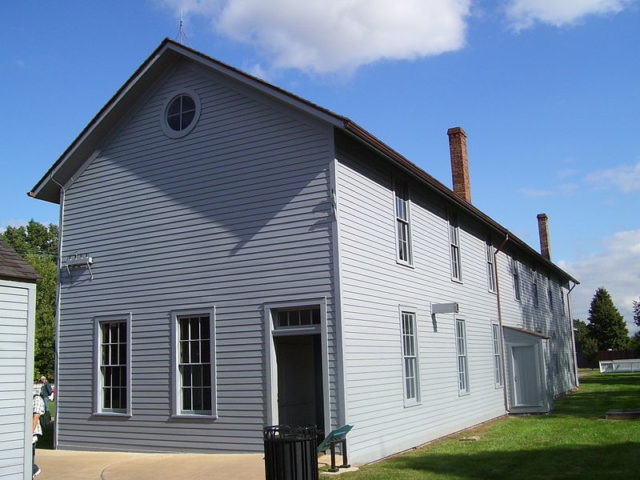
Edison next tackled the telephone, which had first been invented by Alexander Graham Bell. However, it was still a crude and inefficient machine. Western Union hoped that Edison could build on Bell’s initial work and produce an instrument that they could sell without infringing Bell’s patents. He did improve both the earpiece and the mouthpiece and invented a transmitter that allowed the signal to travel over longer distances.
In June 1877, Edison was working on a means of not only sending a voice along a piece of wire but also of recording that voice.
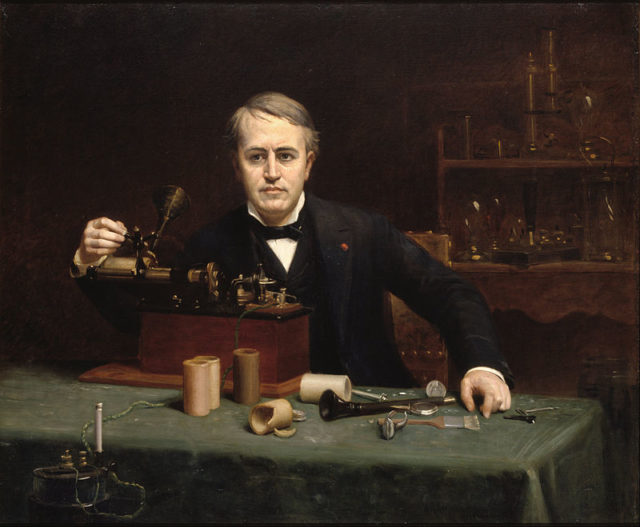
During his experiments, he accidentally scratched lines into a disc, which then made a sound. This inspired Edison to design a machine called the phonograph, and by November of the same year, Edison and his team had produced a working model of the device.
This invention shot him to fame and he was nicknamed ‘The Wizard of Menlo Park’ by a local newspaper. Edison was invited to the White House to demonstrate this marvellous invention for President Hayes.
Edison floated a company that was responsible for marketing the phonograph, and he soon turned his attention to electric lights.
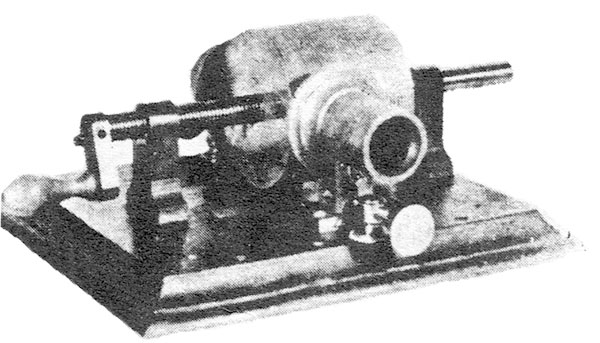
By the 1870s, many inventors had created some form of electric lighting. Edison saw Moses Farmer’s demonstration of arc lighting at the 1876 Centennial Exposition in Philadelphia. He came away impressed but determined to create a better light; an incandescent bulb that produced a better quality of light.
By October 1879, Edison and his team had finally found a material that burned for a long time and gave off the light he was searching for. This material was a carbonized cotton sewing thread that burned for some 15 hours.
Edison now needed to go forward and make his invention mainstream. However, he not only had to fine tune the light bulb but also needed to create the entire electrical reticulation system as there was nothing like it at the time. No generators, no cables, no sockets, and no light switches; he had to create all of this from scratch.
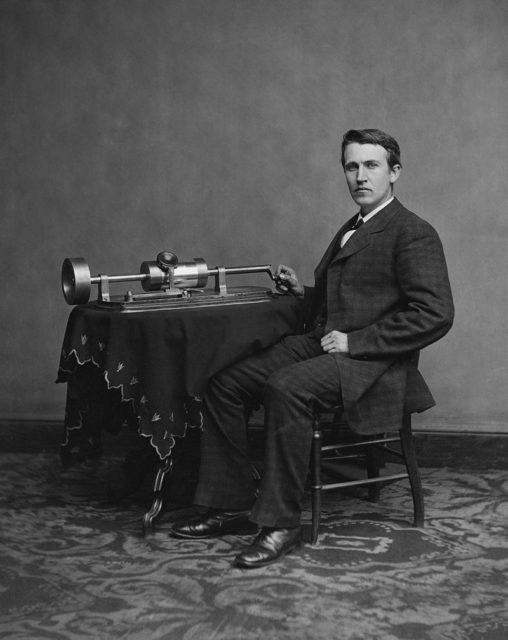
The only way to go forward was to raise a substantial amount of money from investors, so he set up a demonstration in his laboratory and invited investors to come and see for themselves. They were amazed, and he quickly raised the necessary finance to light up Manhattan.
On the 4th September 1882, Edison lit up one square mile of Manhattan. Slowly, as more and more customers applied for an electrical connection, his power station finally broke after two years of operation.
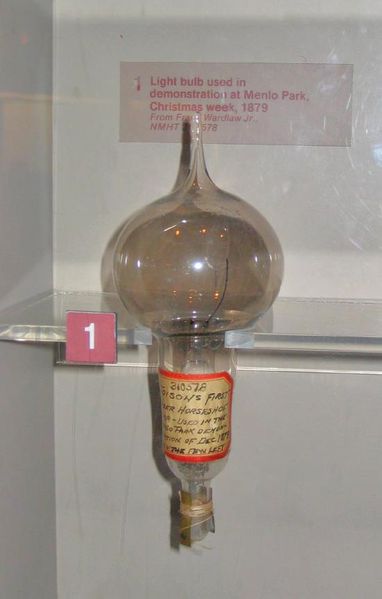
Edison became embroiled in a dispute over which form of electricity was superior, AC (alternating current) or DC (direct current).
Edison favored DC, and his opponent Westinghouse favored AC. All the evidence pointed to AC being the more economical and efficient current, but Edison stuck to his guns, claiming that DC was superior.
In an effort to discredit alternative current, Edison staged some highly controversial and misleading experiments purporting to show how dangerous AC current was.
These stunts forced Westinghouse to offer to meet with Edison to settle their differences, but Edison refused to meet. Eventually, consumers settled the argument by choosing AC suppliers. The final nail in the coffin was when Westinghouse won the contract to generate hydro-electric AC current from the power station at Niagara Falls.
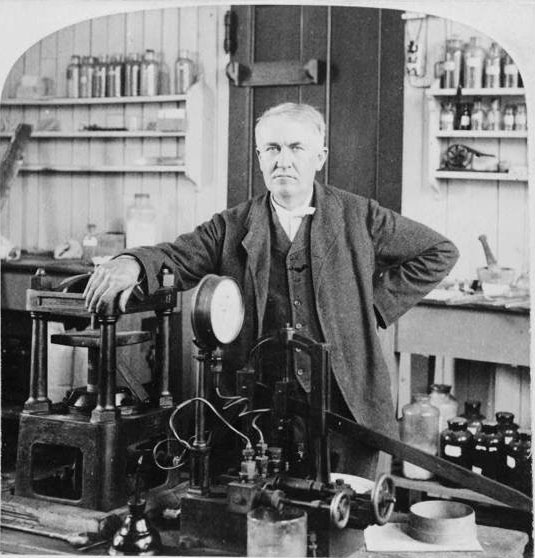
Sadness and recovery
Mary, Edison’s neglected wife, passed away in August 1884 at the young age of 24. His sons went to live with their grandmother, Mary’s mother, whilst Marion chose to stay with her father, whom she developed a close relationship with.
At age 39, Edison married Mina Miller, an extremely well-educated and wealthy young lady. The family moved to West Orange and had three children together: Madeleine, Charles, and Theodore.
Edison built a new laboratory in West Orange and, along with several investors, founded a new company named Edison General Electric.
This new facility became the breeding ground for several ground breaking inventions.
In 1893, Edison made his first foray into motion pictures by inventing the kinetograph, which was designed to capture motion, and the kinetoscope, which allowed the playback of images. He then built a studio in his West Orange premises, which produced films such as The Great Train Robbery.
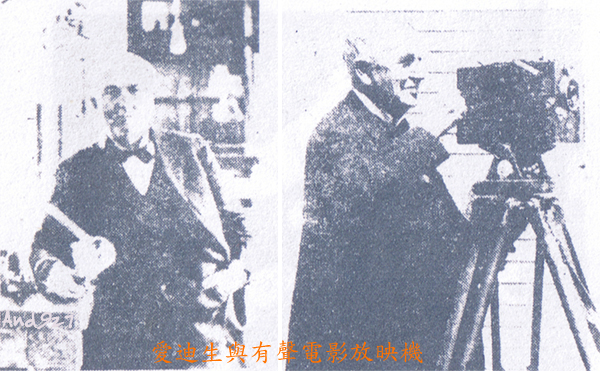
One of his earlier inventions had already moved into the mainstream, and sales of the phonograph were making Edison a wealthy man.
At the same time, Edison dabbled in X-rays, and he produced an X-ray machine called the fluoroscope, which allowed one to see inside the human body. However, a lack of understanding of the dangers of X-ray radiation led to one of his staff dying from radiation poisoning, so Edison stopped all work on this subject and never researched it again.
Edison was a curious man all his life, and he loved other inventions that came along at the same time. Henry Ford and the automobile fascinated him, and the two became lifelong friends.
During World War I, Edison served on the Naval Consulting Board. This think tank was made up of scientists and inventors who worked for the US war effort. Edison proposed that a dedicated scientific laboratory be built, which contributed significantly to the war effort for both the First and Second World Wars.
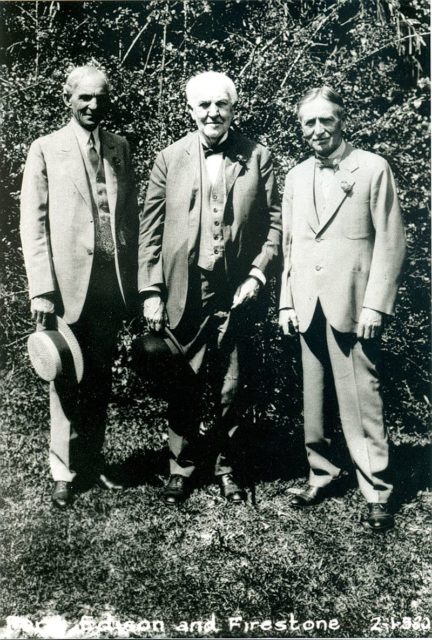
In 1928, Edison was awarded the Congressional Gold Medal for his contribution to science.
Edison passed away peacefully at his home on the 18th October 1931 at the age of 84. He was paid the ultimate compliment by President Hoover, who asked everyone to dim their lights in tribute to the man that made it all possible.
